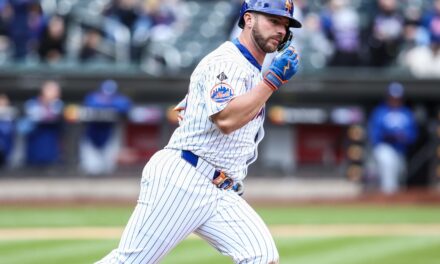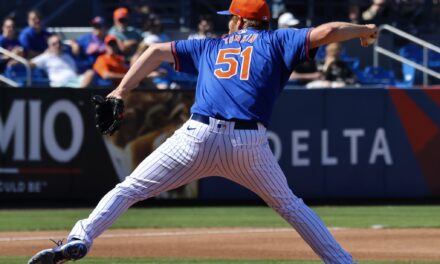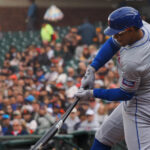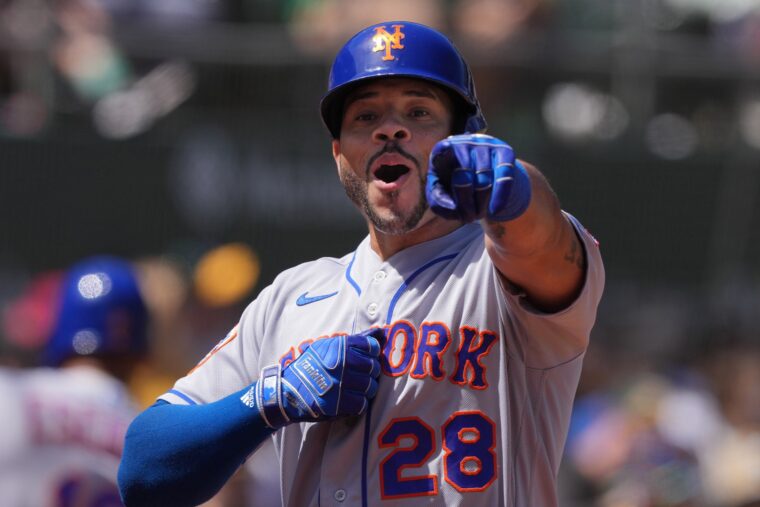
Darren Yamashita-USA TODAY Sports
It might just be time to start asking hard questions about the New York Mets.
For all the talk that it is early in the season, getting swept by the Detroit Tigers one week after nearly doing so to the Washington Nationals must flash warning signals. The baseball season is long, but the age of the Mets’ roster means that struggles will be questioned as natural regression rather than just a speed bump in the 162-game grind.
This series against Detroit showcased the Mets’ weaknesses in many areas of their roster. The team has now lost nine of its last 11 games to fall to the .500 mark.
3 Up
Yacabonis Boon
Jimmy Yacabonis began the season in the minor leagues, and the fact that he has options likely means he’ll find his way down there, again. However, his performance in the opening game of the series gave the Mets a chance to take the lead before they blew it in the eighth.
After Joey Lucchesi struggled through four innings, giving up four runs on two homers, Yacabonis entered and righted the ship for the next three innings. He was a perfect nine up and nine down on 36 pitches, including three strikeouts. That level of pitch efficiency (12 pitches per inning) is not something the Mets are accustomed to this season.
Relief pitching is highly volatile, which means Yacabonis could easily find himself in the “3 Down” section of this article in the next series. However, just those three innings were one of the only bright spots for the Mets in a miserable three games. Yacabonis’ .290 xSLG and 33.3% hard-hit rate, albeit in just 8.2 innings pitched, suggest that he’s doing something right, even if his 2.55 FIP is offset by a 3.85 xFIP.
Pham Picks it Up
Tommy Pham broke an 0-for-17 slump in style in the series opener, going 3-for-4 with a home run and a double. He also put up one of the two hits the Mets managed off Eduardo Rodriguez in the finale. Overall, he was 4-for-7 in the series.
Pham has also had his streaks this season, starting slow before heating up, then going ice-cold before having a strong two games against the Tigers. He hasn’t quite helped against left-handers in the early going, which is one of the reasons that he has only 51 plate appearances in the Mets’ first 32 games. With Mark Canha and Starling Marte struggling in the early going, Pham has the opportunity to earn more playing time if he can be more consistent and hit against lefties.
Verlander Settles Down
It was a rough first inning back for Justin Verlander, as he allowed two home runs in the first inning of the game. However, he settled in to throw four scoreless and limit his former team to two runs in five innings. Though he was the pitcher of record on the short side, the Mets still hope that Verlander can steady their rotation as he stretches out.
Verlander’s start did include many hard-hit balls, but he still managed to limit the damage in his first start back. Two runs in five innings should be enough to win against a bad team. The Mets did run into a battering ram in Rodriguez, but their hitting has often been so lackluster that the margin for error for their pitchers is virtually nonexistent.
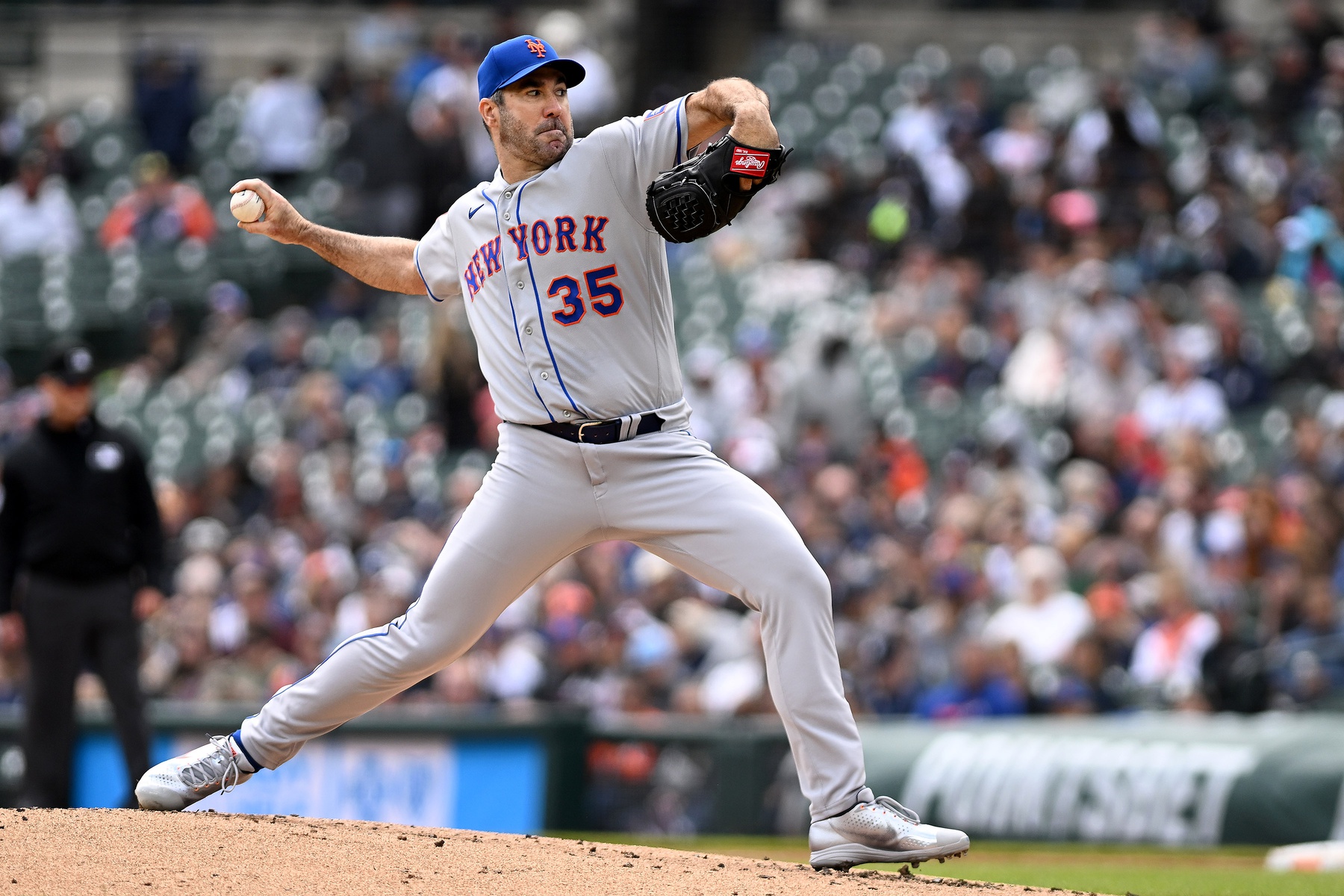
Lon Horwedel-USA TODAY Sports
3 Down
Struggles vs. Bad Teams
Whether the Mets can be a good team or not remains to be seen. If they want to be a good team, though, they need to beat up on bad teams. Objectively speaking, the Detroit Tigers are a bad team; they came into the series with a 10-17 (.370) record, which would translate to over 100 losses. Instead, not only did the Mets lose the series, but they got swept.
In the last few weeks, the Mets have lost series to the Nationals and Tigers and failed to win a series against the Giants. They will face the Rockies next, another team with a sub-.500 record and a poor roster. Struggling against the softballs on the schedule will leave the Mets in a tight spot as the season progresses.
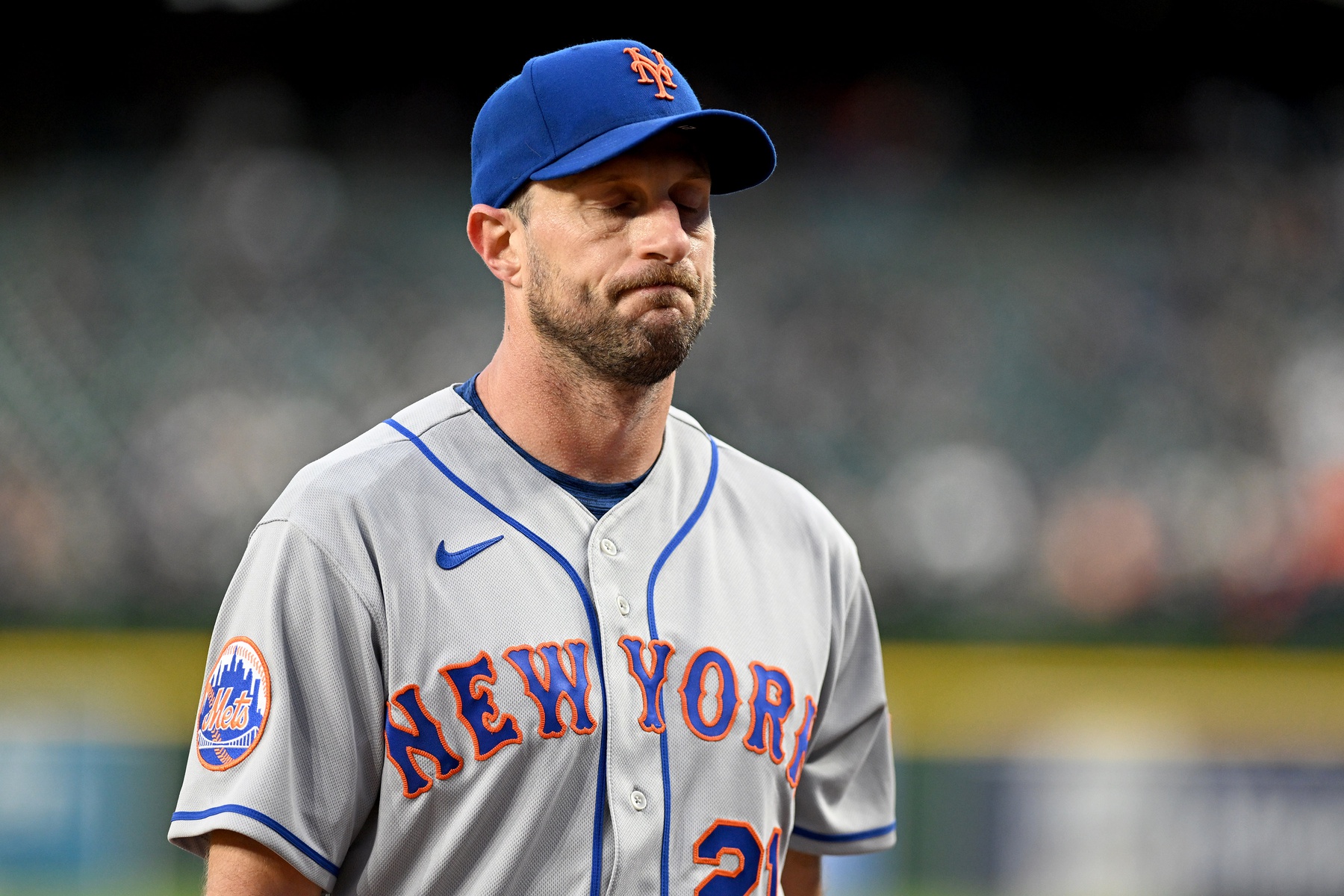
Lon Horwedel-USA TODAY Sports
Scherzer Hitting an Age Wall?
Max Scherzer‘s start against the Tigers was nothing short of a disaster. Eight hits and six earned runs in 3.1 innings is inexcusable from a player making $43 million per year. Sure, it was a return after a 10-game suspension, but that doesn’t fully explain why Scherzer’s velocity and spin rates were both significantly down.
Scherzer continued to be victimized by the home run, yielding two more bombs. He has now yielded a 13.6% barrel rate this season, which is nearly double the MLB average (6.8%) and ranks in the seventh percentile. His other numbers are also poor, including xERA (5.26, 26th percentile), xSLG (.503, 16th percentile), strikeout rate (20.8%, 39th percentile), and walk rate (10.2%, 34th percentile).
It’s still early in the season, and Scherzer has only made five starts thus far. However, the level at which he is getting hit is deeply concerning. With his strikeout rate down nearly 10% from last season (which was already the lowest mark of his career at 30.6%), the question has to be asked about whether Scherzer is hitting a wall.
Of course, Scherzer has been vocal about his opposition to the pitch clock, which could be interfering with his pitching. In general, the limited time between pitches could be affecting the Mets’ older throwers more than it does younger hurlers. Still, until and unless there is an adjustment to the pitch clock time, this could be a significant issue holding Scherzer back.
Meet the Mets’ Offense
As the Mets keep waiting for their hitting to come together, it’s time to start questioning whether that is actually going to happen.
Hitters like Pete Alonso, Francisco Lindor, and Brandon Nimmo have all been extremely streaky throughout their careers. Considering the length of their respective ups and downs, it is likely that there will always be significant overlap in their down streaks. The trio combined to hit 6-for-34 (.176) in the series with one home run, two RBIs, and 11 strikeouts.
Daniel Vogelbach continues to frustrate Mets fans with his extreme patience and unwillingness to swing at balls that should be hit with authority. He is tied for the lowest meatball swing rate (50%) of any batter with at least 73 plate appearances, despite facing a 7.4% meatball rate, which is in the 60th percentile. A .405 on-base percentage is nice, but for the Mets, it is offset by Vogelbach’s .383 SLG. A player who cannot run or field must bring more value than simply getting on base. Vogelbach went 1-for-6 in the series.
Brett Baty and Francisco Álvarez have shown signs of promise in recent weeks, but they’re going to take their lumps as young players. The pair quieted down in the series, going a combined 1-for-11. The Mets were not meant to be relying on their youngsters to prop up an anemic offense.
The Mets combined to bat 18-for-94 (.194) in the series, including 8-for-59 (.136) in the final two games. They remain unable to hit left-handed pitching, particularly starters. They went 2-for-13 with runners in scoring position and did not manage to maintain an at-bat with runners in scoring position in the finale.
Maybe this Mets offense will pick it up again. They were in the top 10 in most meaningful run-scoring categories last season, after all. It’s hard to imagine that running it back with a similar lineup would produce such diametrically opposite results.
But maybe they won’t. 2021 showed what could happen to an offense that was good on paper. That year, Lindor, Michael Conforto, Dom Smith, Jeff McNeil, and James McCann all hit much worse than expected. Maybe this is just who the offense is. Time will tell, but there is a reason to be concerned.
The Mets return to Citi Field to face the Rockies over the weekend.


